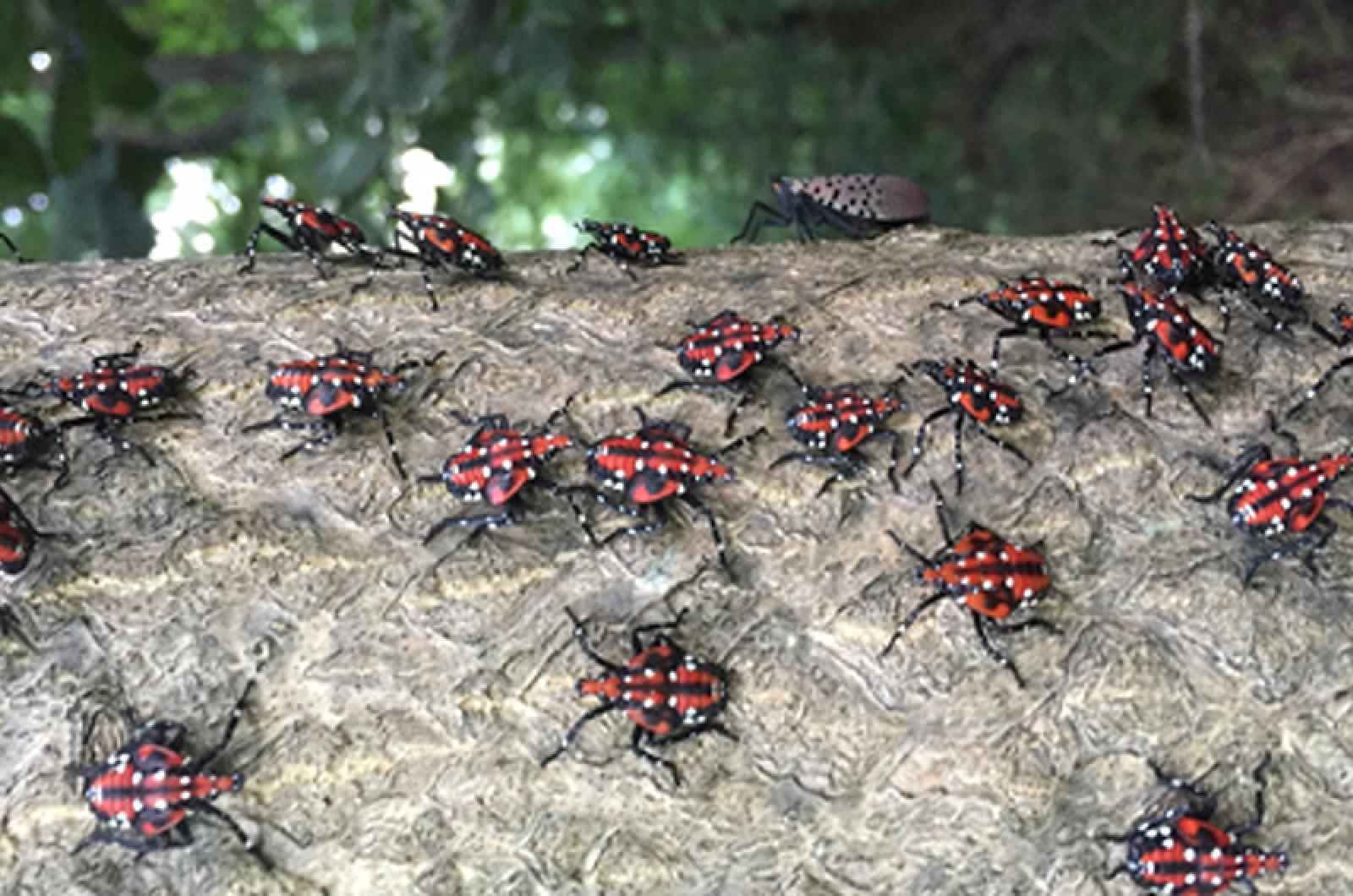Australian novelist Richard Flanagan takes a benevolent view of immigration: “We’re a migrant nation made up of people who’ve been torn out of other worlds, and you’d think we would have some compassion.”
For the most part I agree, however, this is one immigrant for which I have no kindness — the spotted lanternfly.
Spotted lanternflies didn’t come to this country on their own accord. They arrived from Asia in a shipment of stone delivered to Pennsylvania. Detected in 2014, these insects have taken up residence in our country and are spreading quickly.
Thirteen counties in Pennsylvania have been infested with this pest and have established a quarantine to stop the spread of this dangerous and damaging species. To date, this insect has been sighted in Delaware, New Jersey, Virginia, Maryland, New York, Connecticut, and, just recently, in Massachusetts. Incursion into our home state occurred last December when a single insect was found on a poinsettia plant at a private residence in Boston. The festive plant came from Pennsylvania and along with it, a spotted lanternfly.
Why the concern about one dead insect in Boston or even a small infestation in the Mid-Atlantic States? The damage that lanterflies can do is extensive.
This insect is not a fly, but a plant hopper that makes its living off of the sweet juice of plants. While eating, this sap sucker secretes a liquid called honeydew that promotes sooty mold and will kill the host plant. Since lanternfly adults prefer grapevines, fruit trees and hops (in addition to 65 other species), an outbreak can be disastrous for farmers and commercial fruit growers.
While this pest is not yet on the Island, we must be vigilant to keep it off. Consider the influx of visitors, plants and materials that come commercially and privately. Adults, nymphs or eggs of the lanternfly can be hitchhikers on your car, plants, furniture and any other myriad of surfaces and objects. If you are from an infected area, inspect anything and everything before taking a trip or transporting materials out of your home area.
Adult lanternflies resemble moths and are about an inch long and an inch and a half wide at rest. Their forewings are dull, brownish gray with black spots, though its hind wings open to reveal a bright red, white and black pattern. Nymphs are black and beetle-like with white spots. The nymphs have a red phase before morphing into adults. Be especially vigilant this time of year for eggs. Egg masses appear yellow-brownish and are covered with a gray waxy coating.
If you see what you believe are these insects, be sure to contact authorities for identification and confirmation. If you are sure, please report them to the appropriate state agency. Photograph and save the insect for verification by experts. Use the Internet for identification and reporting – each region has its own reporting structure.
Lanternflies only light the way to agricultural disaster, damaged crops, and destroyed plants. In this country, we should welcome the “tired, poor huddled masses” as long as they’re not of the insect variety.
Suzan Bellincampi is director of the Felix Neck Wildlife Sanctuary in Edgartown, and author of Martha’s Vineyard: A Field Guide to Island Nature and The Nature of Martha’s Vineyard.




Comments
Comment policy »